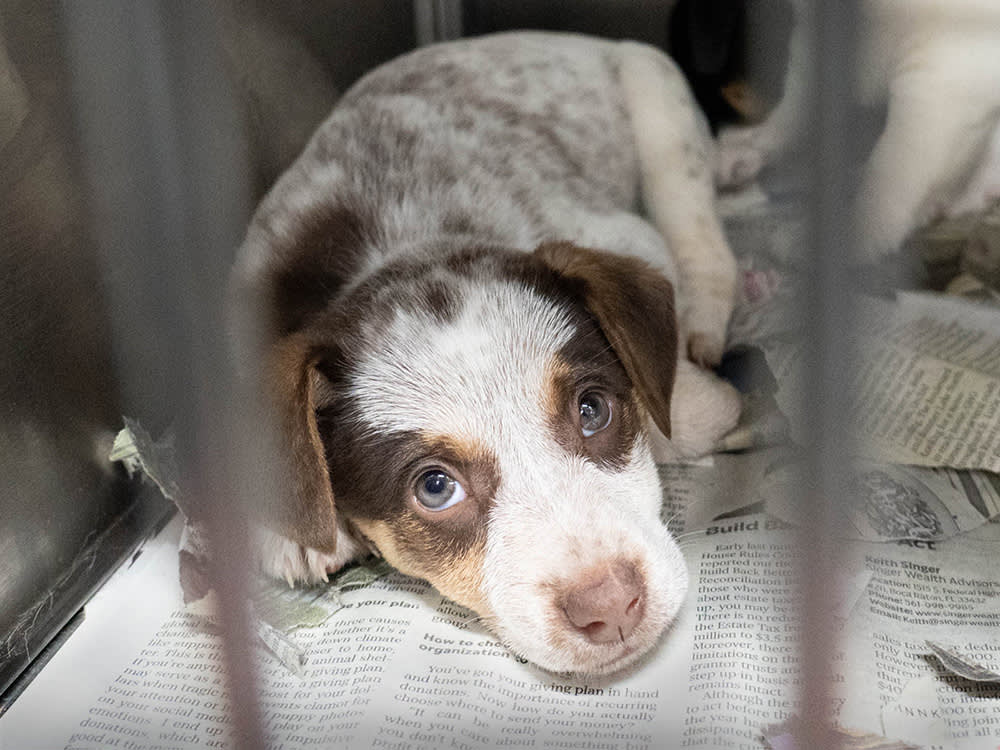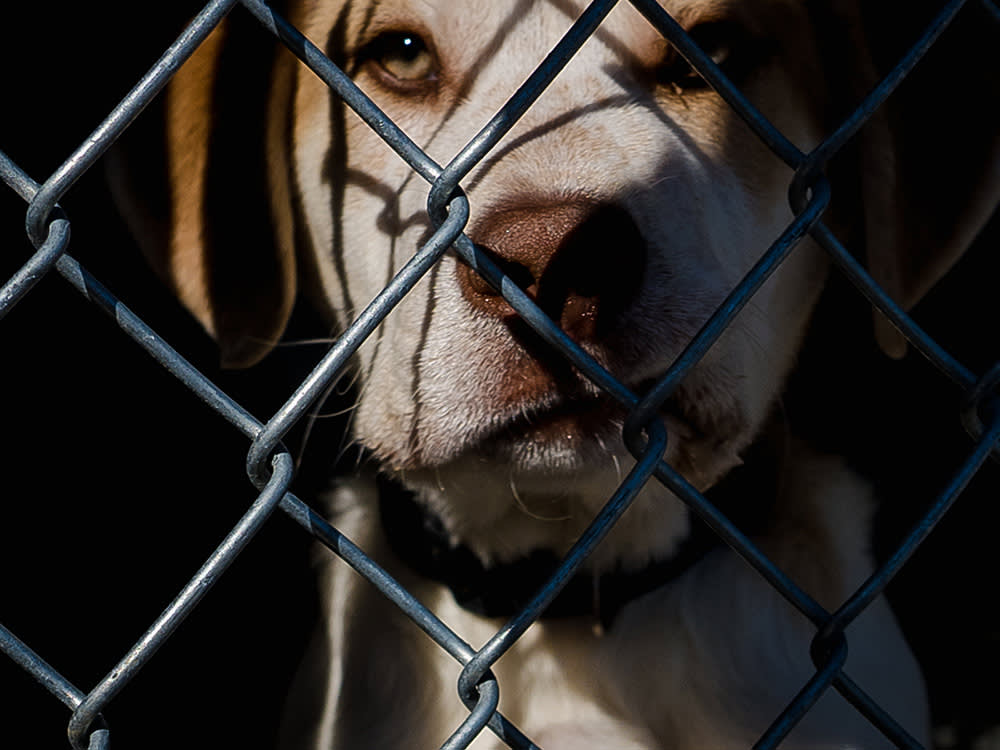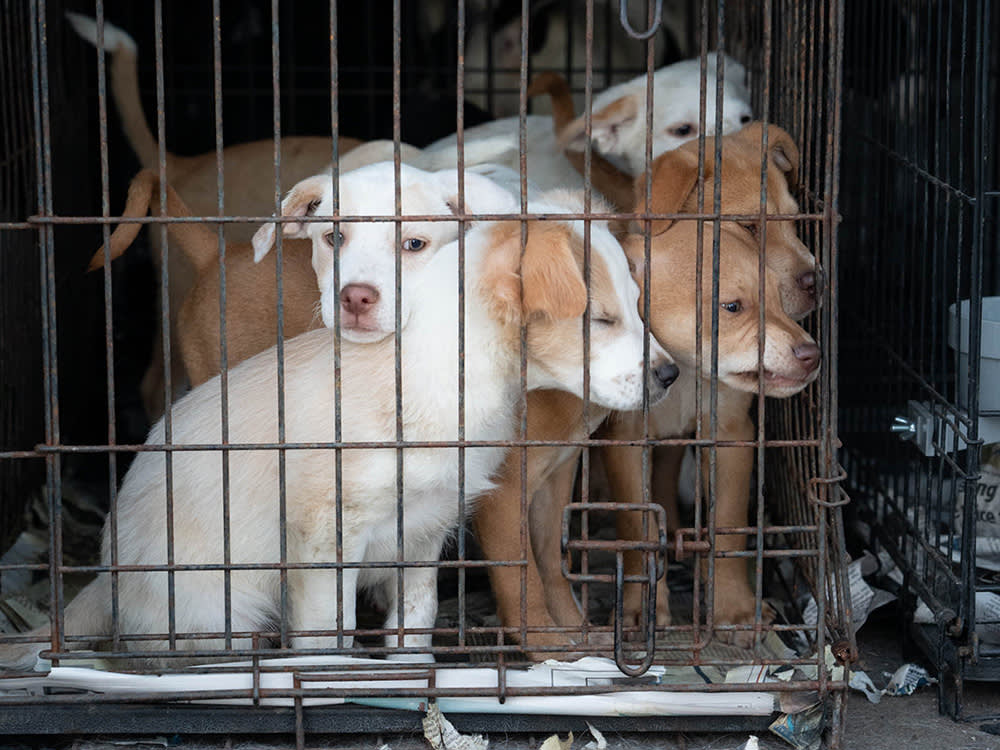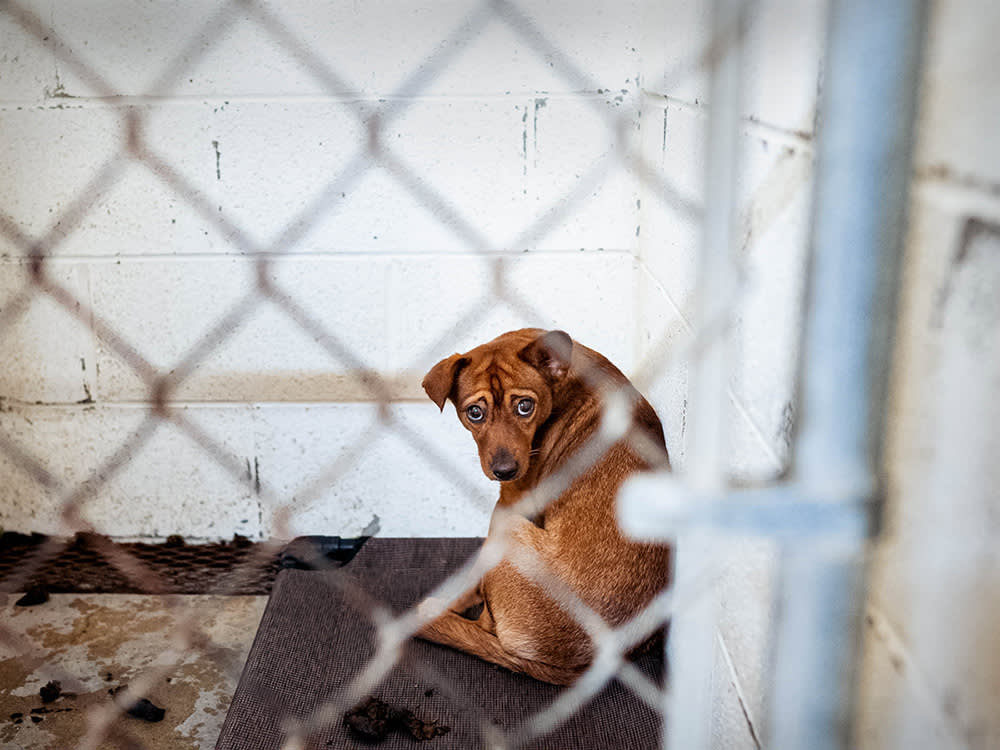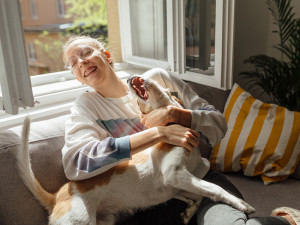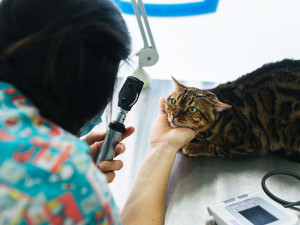Animal Shelters Are Filling Up Once Again
Adopting a pet in the pandemic was a competition. Now, shelters need all the adopters they can get.
You remember how it went: In 2020 and early 2021, the world saw record pet adoption ratesopens in new tab, providing happy tales when they were much needed. But now, in 2022, many of our shelters, particularly in the South, are swamped again.
“Shelters who haven’t had to euthanize in 10 or 15 years are having to again,” says Tammy Dodson, a long-time rescue advocate who coordinates rescue transports out of Wise County, Virginia, moving dogs and cats north to rescues and adopters via the Animal Rescue Coalitionopens in new tab.
Trick question: All dogs are perfect! But find out which type is the best fit for you.
Where are all these dogs coming from? It’s not that a higher percentage of pandemic adoptions are resulting in returns. In fact, the return rates for dogs has stayed steadily around 10 percent — but 10 percent of recent adoptees is going to be a much higher number than years prior. And even those returns don’t account for the amount of shelter overflow.
After touring 30 shelters and rescues and speaking to staff in late 2021 and early 2022, I think I know what else is going on.
How much do you spend on your pet per year?
Editor’s note: Interviews with the featured shelters were conducted ahead of February 2022. Since then, shelters have continued to struggle, and with inflation in the U.S., longtime owners are having to surrender their pets. Please see the end of this article for how you can help.
Owner Surrenders
Dogs are being surrendered to shelters and rescues in record numbers. At Big Dog Ranch opens in new tab in Florida, they normally take in one owner surrender a day, but they’re currently taking about seven owner surrender dogs daily. It’s the same story at shelter after shelter. Some of these dogs are young purebreds purchased during the pandemic whose breed eccentricities or needs were too much for a new owner.
Many of the dogs being surrendered are given up because their owners can no longer afford them, or their work or housing situation has changed drastically. At Gastonia Animal Care and Enforcementopens in new tab in North Carolina, they braced for the onslaught of surrenders after receiving news that the sheriff’s department would be serving 300 eviction notices.
Rising Animal Birth Rates
During 2020 and even into 2021, many vets were closed or not performing elective surgeries, so thousands of spay and neuter surgeries were canceled or postponed. And even when offices reopened, appointments were hard to come by. Shelters and rescues that depended on discounted surgeries were even lower on the list. This has led to more puppies and kittens landing in shelters.
Normal Animal Control Strays, Seizures, and Court Cases
The number of animals that turn up as strays, are seized because of abuse or neglect or abandonment, are held as evidence in court cases, or are left behind after the death of their owner continued throughout the pandemic. Strays must be legally held at a shelter for their “stray hold,” which is normally five to 10 business days, depending on the jurisdiction. During that time, they can’t be adopted out or transferred to rescue. Dogs seized for legal reasons must be held until their case is settled and cannot be adopted out or transferred to rescue (those dogs were most likely not in the pictures of those empty shelters, but they were still being held at the facility).
All of these factors combined created rising intake numbers for shelters and rescues. Those numbers are tough, but as outtakes have dried up, they are even more challenging.
How Can You Help?
“During the pandemic, rescues were begging us for dogs, but now I’m struggling to find rescues for puppies,” laments Jo Anne Harding, who coordinates rescue transports from Lee and Dickson County, Virginia. Adoptions have slowed to a trickle or stopped altogether. Rescues and foster homes are full. No one can take the easy-to-place dogs, let alone the challenging dogs like bully breeds, hound dogs, heartworm-positive dogs and medical cases.
The presence of small dogs, purebreds, and puppies in shelters during our visits this past fall were the “canary in the coal mine.” Those are desirable dogs most shelters usually have no trouble adopting out or transferring to rescue. At one shelter in Simpson County, Kentucky, a Husky paced his kennel maniacally. In Cowen, West Virginia, at Saving Webster Dogsopens in new tab, a rescue that functions as the county shelter, a beautiful Bassett Hound puppy wandered around his muddy kennel and a scruffy terrier jumped at the kennel fence.
The pandemic led huge numbers of people to seek comfort in the company of animals. But now as the pandemic recedes, those who work in animal welfare are challenged to find new solutions. Counties and states must step up and do more, and it’s my hope that all the newly minted pandemic-inspired adopters will become voices for the animals left in its wake.
The challenges of our shelters, particularly in the South, are large; but there are solutions, even in the places now struggling like never before. In many parts of our country, the shelter dog population is under control thanks to good dog laws, access to low-cost spay and neuter services, high-quality shelters, and community engagement. There are many ways to help your local animal shelter. If you’re looking to adopt, consider taking in a less adoptable dog, such as an adult dog or mutt. Feeling extra ambitious and finding yourself with a lot of time on your hands? It’s possible to start your own animal rescue and increase the number of doors open to homeless animals.
It is possible to save every adoptable dog, but first we need to acknowledge what’s happening and commit to addressing the problem. Our compassion has to trickle down to the places where it’s desperately needed and inspire action, creative solutions, and funding to take on this very fixable problem and ensure that every dog has a home.
What Else You Can Do
Volunteer
Volunteer at your local shelter or rescue.
If you don’t have a local shelter or rescue, you can also volunteer virtually at struggling shelters and the rescues that help them. Many need help with social media, fundraising, record-keeping, and other areas that don’t require the volunteer to be physically present.
Who Will Let the Dogs Outopens in new tab is a nonprofit that works to raise awareness and resources for struggling shelters. They would be happy to match your energy and interests to shelters in need or on projects within the organization.
Adopt
If you’re looking for a new furry family member, look for a dog that fits your family regardless of breed.
If you know someone looking for a pet, encourage them to consider adopting from a rescue or shelter.
Adopt from a shelter or rescue. Choose a shelter or rescue that works to save dogs in struggling areas and support them with your donations. Follow them on social media, share their story, and promote their work. If you need a list of shelters in need, visit Who Will Let the Dogs Outopens in new tab to discover deserving shelters in our southern states.
Foster
Consider fostering for a local shelter or rescue. Fostering saves two lives – the dog you foster and the dog you make room for in the shelter.
Educate
Learn about the animal shelter and rescue situation.
Recommended reading:
Rescue Road: One Man, Thirty Thousand Dogs, and a Million Miles on the Last Hope Highwayopens in new tab by Peter Zheutlin
The Dog Merchants: Inside the Big Business of Breeders, Pet Stores, and Rescuers opens in new tab by Kim Kavin
One Hundred Dogs & Counting: One Woman, Ten Thousand Miles, and a Journey Into the Heart of Shelters and Rescues opens in new tab by Cara Sue Achterberg



